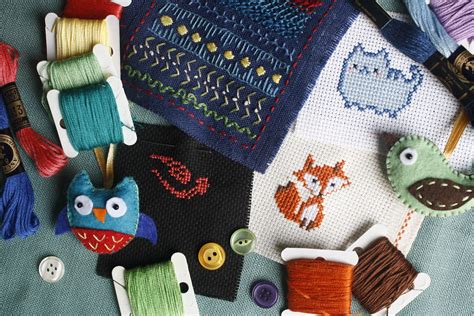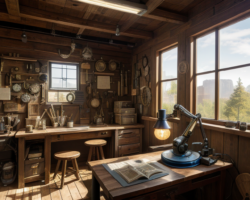Discover the essentials of knitting from selecting quality yarn to creating custom designs and mastering advanced stitch patterns. Perfect for beginners and experienced knitters alike.
Finding the Right Needles
When it comes to knitting, finding the right needles is essential for creating a successful project. The type of needle you choose can have a significant impact on the outcome of your work. There are many different types of needles to choose from, including straight, circular, and double-pointed needles. Each type has its own unique set of advantages and disadvantages, so it’s important to consider your specific knitting needs before making a decision.
For beginners, it’s recommended to start with a set of medium-sized straight needles. These are easy to handle and are perfect for practicing basic stitch techniques. As you become more experienced, you may want to explore different types of needles to find the ones that best suit your knitting style.
It’s also important to consider the material of the needles. Metal needles are durable and slick, making them great for fast knitters. On the other hand, wooden needles are warm to the touch and provide a good grip, which can be helpful for those with hand pain or arthritis. Bamboo needles are lightweight and flexible, making them a good choice for knitting on the go.
Selecting Quality Yarn
When it comes to knitting, the quality of your yarn is crucial to the outcome of your project. Choosing the right yarn can make all the difference in the final product, determining its durability, texture, and overall appearance. Whether you’re creating a cozy scarf, a delicate shawl, or a chunky sweater, selecting quality yarn is essential for achieving the desired result.
One key factor to consider when choosing yarn is the fiber content. Natural fibers such as wool, cotton, and silk offer excellent breathability and softness, while synthetic fibers like acrylic and nylon are durable and low-maintenance. Blended yarns combine the best of both worlds, offering a balance of performance and comfort. Consider the qualities you desire in your finished project and select a yarn with the appropriate fiber content.
Another aspect to keep in mind is the weight and thickness of the yarn. Different projects call for different yarn weights, from the fine lace weight to the bulky weight. It’s important to match the yarn weight with the recommended needle size for your pattern, ensuring your stitches are neither too loose nor too tight. Additionally, the dye lot of the yarn may affect the color consistency of your project, so it’s wise to purchase enough yarn from the same lot to avoid any variations in shade.
Learning Basic Stitch Techniques
When you are just starting out with knitting, mastering the basic stitch techniques is essential to creating beautiful and professional-looking projects. One of the most common and important stitches to learn is the knit stitch, which forms the basis for many other stitches and patterns. This stitch is created by inserting the right needle into the front loop of the left needle, wrapping the yarn around the right needle, and pulling the new loop through to the front. Practice this motion until you can easily create even and uniform knit stitches.
Once you have mastered the knit stitch, the purl stitch is the next essential technique to learn. This stitch is the reverse of the knit stitch and is created by inserting the right needle into the back loop of the left needle, wrapping the yarn around the right needle in the opposite direction, and pulling the new loop through to the back. The combination of knit and purl stitches allows for an endless variety of textures and patterns in your knitting projects.
Another important basic stitch technique to learn is the yarn over, which is used to create deliberate holes or eyelets in your knitting. To make a yarn over, simply wrap the yarn around the right needle without knitting or purling it. Understanding and practicing these basic stitch techniques will give you a strong foundation for more advanced knitting patterns and designs.
Exploring Advanced Stitch Patterns
Once you have mastered the basic stitch techniques in knitting, it’s time to take your skills to the next level by exploring advanced stitch patterns. This is an exciting phase of your knitting journey, as it allows you to create more intricate and sophisticated designs.
One of the key aspects of advanced stitch patterns is understanding the concept of gauge and tension. This is crucial in ensuring that your stitches are even and consistent throughout your work. By practicing different stitch patterns, you will be able to develop a better sense of control over your tension, resulting in a more polished finish.
Furthermore, advanced stitch patterns offer endless possibilities for creativity and self-expression. By learning and incorporating complex stitch patterns such as lace, cables, and bobbles into your projects, you can elevate your knitting to a whole new level. These intricate patterns add texture and visual interest to your work, making it a true work of art.
Creating Custom Knit Designs
When it comes to knitting, there are endless possibilities for creating custom designs that reflect your personal style and creativity. Whether you’re a beginner or an experienced knitter, the process of designing and creating your own knit patterns can be both rewarding and fulfilling. By exploring different stitch patterns, yarn types, and color combinations, you can develop unique designs that are truly one-of-a-kind.
One of the keys to creating custom knit designs is to have a strong understanding of basic stitch techniques and pattern construction. This knowledge will allow you to experiment with different stitch combinations, textures, and motifs to bring your designs to life. Additionally, learning about colorwork and intarsia can open up a world of possibilities for incorporating intricate designs and patterns into your knitted creations.
Furthermore, mastering the art of custom knit designs involves familiarizing yourself with knitting terminology and techniques that are essential for creating professional-quality pieces. Understanding the importance of proper finishing and blocking techniques will ensure that your designs have a polished and professional look that will stand the test of time.
Mastering Colorwork and Intarsia
Colorwork and intarsia are two techniques that can add beautiful and intricate designs to your knit projects. Mastering these techniques can take your knitting to the next level and allow you to create stunning and unique pieces.
One of the keys to mastering colorwork is choosing the right yarn. Quality yarn that is smooth and even in texture is essential for achieving crisp and clear colorwork designs. Additionally, learning how to select the right needles for colorwork, such as double-pointed or circular needles, can make the process smoother and more enjoyable.
When it comes to intarsia, understanding knitting terminology is crucial. The technique involves working with multiple colors in different sections of a project, so being familiar with terms like bobbins and twists is important for achieving clean and seamless intarsia designs. Practice and patience are also key when mastering intarsia, as it can be a bit complex at first, but the results are well worth the effort.
Understanding Knitting Terminology
Understanding Knitting Terminology
When delving into the world of knitting, it’s important to familiarize yourself with the terminology commonly used by knitters. One of the first terms you’ll encounter is gauge. This refers to the number of stitches and rows that fit into a specific measurement, typically 4 inches. Understanding gauge is crucial for ensuring that your finished project turns out the correct size.
Another key term to know is casting on. This is the process of creating the initial row of stitches on your knitting needles. It’s the foundation of your project and sets the stage for the rest of your knitting journey. Alongside casting on, you’ll also need to understand binding off, which is the method for finishing your knitted piece, creating a neat edge.
As you progress in your knitting skills, you’ll encounter terms related to different stitch patterns and techniques. For instance, stockinette stitch is a common stitch pattern that creates a smooth, flat fabric, while ribbing consists of alternating knit and purl stitches to create a stretchy, textured fabric. Understanding these terms will empower you to confidently tackle a wide range of knitting projects.
Finishing and Blocking Knit Projects
When it comes to finishing and blocking knit projects, attention to detail is key. After all the hard work of knitting, it’s important to properly finish and block your project to ensure it looks its best. Blocking is the process of shaping and sizing a knit project to give it a polished and professional appearance. This can help even out any uneven tension in the fabric and ensure the stitches lay flat and uniform.
Finishing involves weaving in ends, sewing seams, and adding any necessary embellishments or closures to complete the project. It’s the final step that brings everything together and gives your knit work a polished and professional look.
By mastering the art of finishing and blocking knit projects, you can elevate your knitting skills to the next level and create beautiful, professional-quality garments and accessories.
Frequently Asked Questions
What will I learn in a knitting workshop?
In a knitting workshop, you will learn the fundamentals of knitting, including different stitches, techniques, and how to read knitting patterns.
Do I need to bring my own knitting supplies to the workshop?
It is recommended to bring your own knitting needles and yarn to the workshop. However, some workshops may provide materials for an additional fee.
Is the knitting workshop suitable for beginners?
Yes, knitting workshops are designed to cater to all skill levels, including beginners. Experienced instructors will guide you through the process and provide individualized assistance.
What are the benefits of learning how to knit?
Learning how to knit can be a relaxing and creative outlet. It also allows you to make personalized gifts, garments, and home decor items.
Will I be able to start a knitting project during the workshop?
Depending on the duration of the workshop, you may have the opportunity to start and work on a small knitting project under the guidance of the instructor.
How long does a typical knitting workshop last?
The duration of a knitting workshop can vary, but it typically ranges from a few hours to a full day, allowing participants to grasp the basics and start a project.
What should I expect to take away from a knitting workshop?
By the end of the workshop, you should have a good understanding of basic knitting techniques, confidence to start your own projects, and the resources to continue improving your skills.





